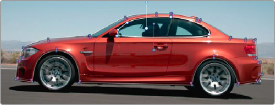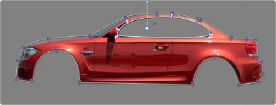

< Previous | Contents | Next >
The two images show the result of subtracting the circular window
Since windows can be individually tracked and keyframed, you can quickly set up complex interactions of windows to solve common problems you’ll encounter. For example, when you’re tracking a window to follow a moving subject that moves behind something in the frame, you can use a second window with Mask turned off to cover the object in front. Now, when the tracked window intersects the subtractive window, the correction will disappear along with the subject.
You can also use the Mask control to create more complex shapes than you can with a single window.


Mattes and mask used together to make complex shapes
Furthermore, once you reach the limits of what shapes you can create using the four available windows, you can combine multiple nodes containing multiple shapes and qualifiers using the Key Mixer.
Copying and Pasting Windows
![]()
If there’s a particular window you’ve created that you want to either duplicate within the current node, or apply to another node, you can copy and paste an individual window’s shape from one item in the Window list to another.
— To copy a window: Click any enabled window in the Window list, then click the Window palette option menu and choose Copy Window.
— To duplicate a window: After copying a window, create another window of the same type that you copied, and then click the Window palette option menu and choose Paste Window.
— To paste a window to another node: Double-click or otherwise select another node, open the Window palette, choose the same type of window that you copied in the Window list, and then click the Window palette option menu and choose Paste Window.
— To paste a window to the same node: Click any enabled window in the Window list, then click the Window palette option menu and choose Copy Window, then click Paste Append Window in the Window Option menu.